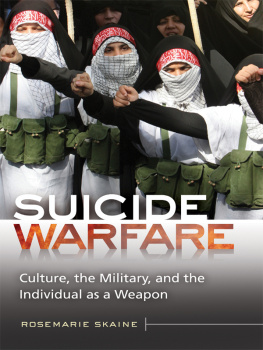Clouds of Secrecy
Clouds of
Secrecy
The Armys Germ Warfare Tests
over Populated Areas
LEONARD A. COLE
Foreword by Alan Cranston
ROWMAN & LITTLEFIELD
Publishers
ROWMAN & LITTLEFIELD
Published in the United States of America in 1988
by Rowman & Littlefield, Publishers
(a division of Littlefield, Adams & Company)
81 Adams Drive, Totowa, New Jersey 07512
Copyright 1988 by Rowman & Littlefield
All rights reserved . No part of this publication may
be reproduced, stored in a retrieval system, or transmitted
in any form or by any means, electronic, mechanical,
photocopying, recording, or otherwise, without the prior
permission of the publisher.
Library of Congress Cataloging-in-Publication Data
Cole, Leonard A., 1933- Clouds of secrecy.
Includes index.
1. Biological warfare-Study and teaching
United States. 2. Biological warfare
Environmental aspects-United States. I. Title.
UG447.8.C65 1987 358.38 87-12777
ISBN 0-8476-7579-3
3 5 4 2
Printed in the United States of America
Contents
Foreword
B IOLOGICAL WEAPONS are particularly heinous. Experts describe them as weapons to distribute living organisms, usually bacteria or viruses, to disable or kill an enemy by causing disease.
The atrocities of chemical warfare during World War I led to one of the farthest reaching agreements of modern times, the Geneva Protocol of 1925. That treaty condemned chemical and biological weapons and prohibited their use. Efforts to ban these two types of weapons continue. The most recent agreement is the Convention on the Prohibition of the Development, Production, and Stockpiling of Bacteriological (Biological) and Toxin Weapons and on their Destruction, signed in 1972. The U.S. and the Soviet Union were among the signatories to both conventions.
The Reagan Administration, however, has accused the Soviet Union of violating the Biological Weapons Convention. The Administration claims the Soviets are maintaining germ warfare plants and have used toxins in Afghanistan. It also alleges that the Laotians and the Vietnamese used toxins under Soviet supervision in Laos and Kampuchea, respectively. Independent scientists have disputed the Administrations allegations, however.
Military leaders have not considered biological weapons particularly reliable. They are difficult to control once released in a battle situation. Arms control specialists say that it is difficult to gauge just how effective these weapons would be in a specific battlefield situation. In addition, the infections they cause could spread beyond the battlefield.
But, some knowledgeable people caution that with advances in biotechnology, the use of biological agents will become more attractive as weapons, not only for armies, but for terrorists as well. This concern, together with the Administrations allegations about the Soviets, has reopened the controversy over biological weapons.
The current U.S. biological warfare program was intended by Congress simply to study ways to counter biological warfare agents (i.e., as defensive research.) The Reagan Administration says that as a matter of policy it is not developing offensive biological weapons. But as Leonard Cole suggests, unless one is constantly on guard, research in defensive biological weaponry can easily spill over into offensive research.
Such a step could be a major blunder. We do not need offensive biological weapons for a strong national defense. Moreover, the risks to the American population in producing such weapons domestically could be monumental.
Safety must be a primary concern in any research conducted with biological agents. Clouds of Secrecy studies one aspect of U.S. Army research carried out in the 1950s and the 1960s. The experiments sought to determine the vulnerability of populated areas to biological attack. Some of the experiments involved the release of supposedly harmless organisms which had properties resembling those certain biological agents. The Army claimed the organisms were innocuous. But Cole presents evidence that those organisms were known to be harmful. He suggests this is still an open question despite the fact that the court ruled in favor of the government in a suit for damages brought by a San Francisco resident in 1981.
Leonard Coles study is a responsible work. It adds measurably to the literature currently available on this highly controversial subject. It raises some legitimate issues that should be explored further.
The first of such issues is the safety of the experiments. Was the population in these areas ever at risk? What about the organisms that were released? Were they completely safe? Equally important is the fact that large segments of the population were subjected to these experiments without their knowledge.
Congress has already taken steps to see that there is no recurrence of such secrecy. In 1977 Congress passed legislation requiring the Department of Defense to notify Congress before conducting any experiments with biological or chemical agents using human subjects. My information is that no secret tests have been conducted since the late 1960s.
Cole makes abundantly clear his opposition to the Armys open air testing and his criticism of the methodology used. And he buttresses his objections with evidence from primary sources about the excesses in the Army program. All in all, Cole makes a good case for the need for continued Congressional oversight.
Alan Cranston,
U.S. Senator
Preface
T HE NOVEMBER 17, 1986 issue of Time magazine carried a curious story about the origin of AIDS. It cited foreign press reports that the disease is the result of U.S. germ-warfare experiments gone wild. United States officials blamed the Soviets for spreading unfounded rumors, and AIDS experts thought the proposition farfetched. Yet, as the article indicated, some respected doctors would not rule out the possibility. Their skepticism addresses the frustration felt by many about understanding a disease that seems to have come from nowhere. It also reflects a simmering disquiet about the nature of the United States biological warfare program.
The army has engaged in biological warfare research since World War II, and its official position is that no one outside its laboratories has ever been at risk. Contrary evidence shows the claim to be hollow. Even if the AIDS/germ warfare allegation proves groundless, other army experiments have endangered large segments of the public.
This book is about these experiments, tests in which clouds of bacteria and chemicals have been sprayed over populated areas. It 1 examines the nature of the tests, their rationale, and the effects on the exposed human populations.
My inquiries took me considerable distances, from a hamlet in northern Scotland where American scientists once helped perform biological weapons tests, to Fort Detrick, Maryland, headquarters of the United States biological warfare program. I spoke with dozens of government officials and scientists who have been involved with the testing program. I also met with citizens whose lives it has affected. Many live near forbidden areas that remain contaminated by bacteria from earlier tests. Some have sued the government, claiming that the armys tests caused illness and death to family members.
The factual story unfolded from interviews as well as documents and court proceedings. But the interviews revealed another dimension. They underscored how intense and partisan is the issue of biological warfare testing. Scientists and officials who are associated with the U.S. biological warfare program make no apologies for testing in populated areas. Their reference point is national security. They believe the Soviet Union is violating the 1972 Biological Weapons Convention that prohibits the development, production, or stockpiling of biological weaponry. The Soviet threat, accordingly, should be addressed with additional defensive research that includes open air vulnerability tests.








